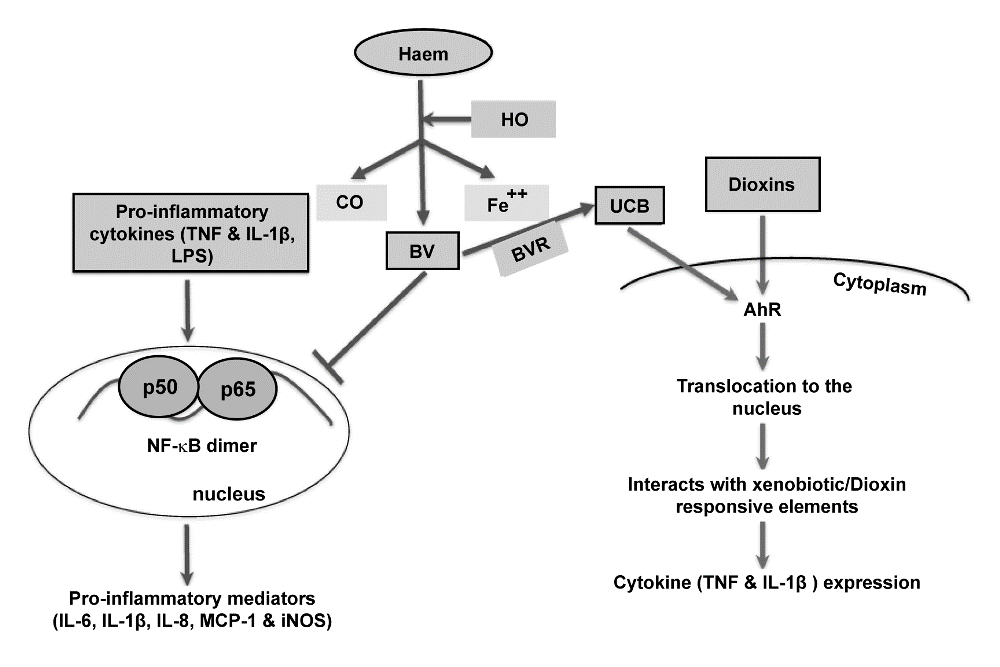
 |
| Figure 7: Possible mechanism of BV and UCB-triggered immunemodulatory effects. Haem is catabolised into BV, iron (Fe++) and carbon monoxide (CO) via the action of haem oxygenase (HO). Biliverdin is rapidly reduced to UCB in the presence of BVR. Proinflammatory mediators and endotoxin activate NF-κB p60/p65 dimer and promote its translocation to the nucleus, where it induces the transcription and translation of pro-inflammatory genes. Biliverdin inhibits the expression of pro-inflammatory mediators via inhibition of NF-κB activation. However UCB, similar to dioxins, may promote translocation of AhR from the cytoplasm and binding to xenobiotics/dioxin responsive elements, which results in activation of AhR. Activated form of AhR then leads to increase expression of cytokines (TNF and IL-1β). |